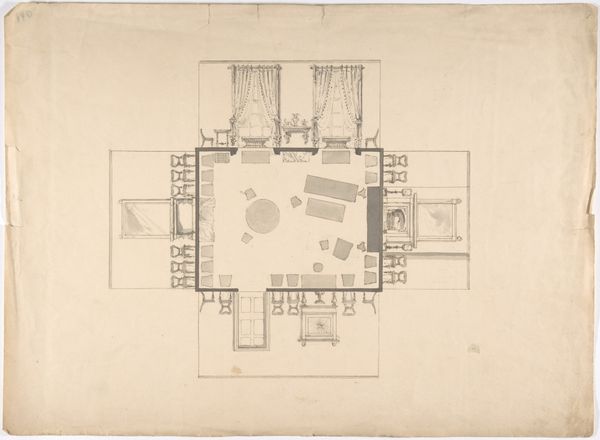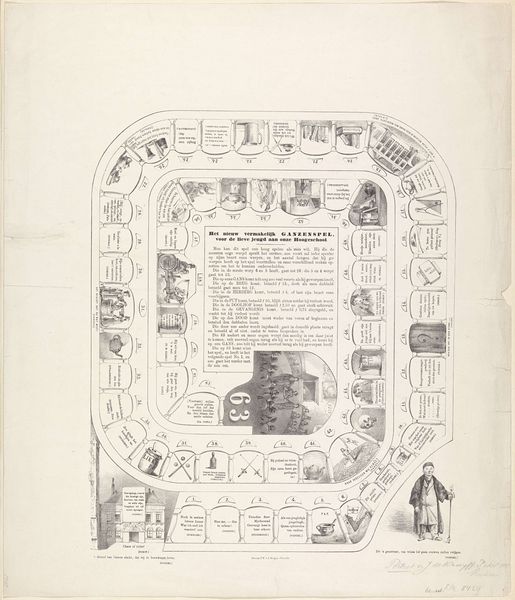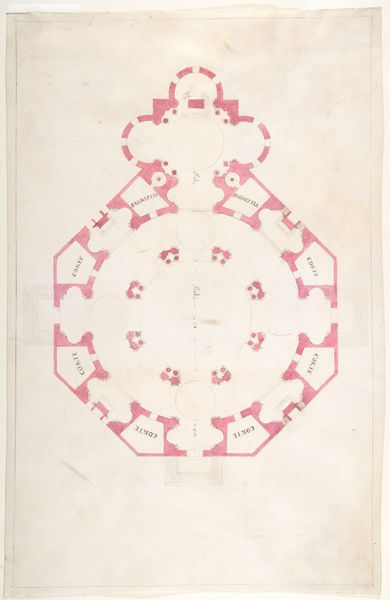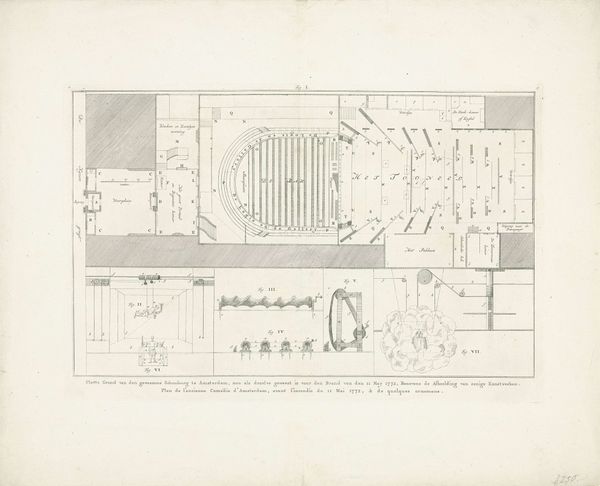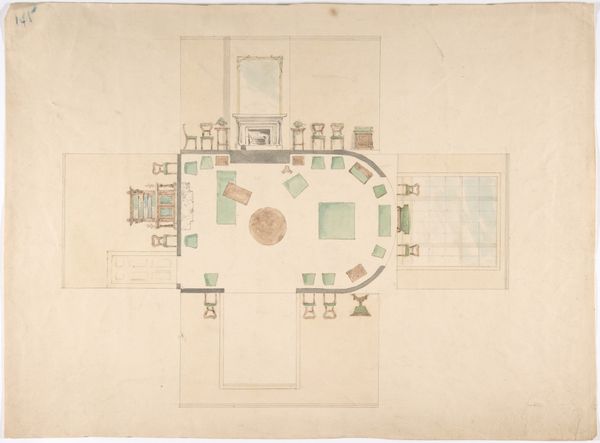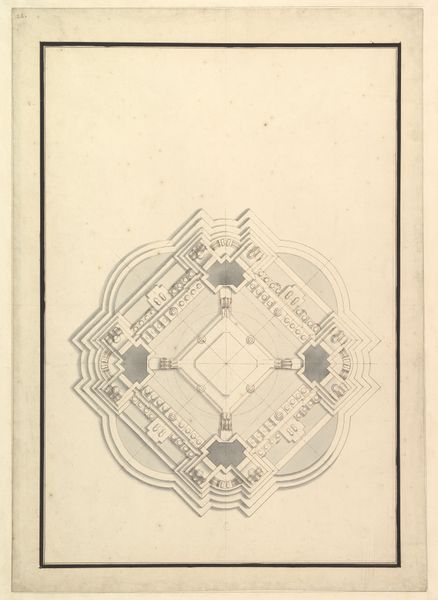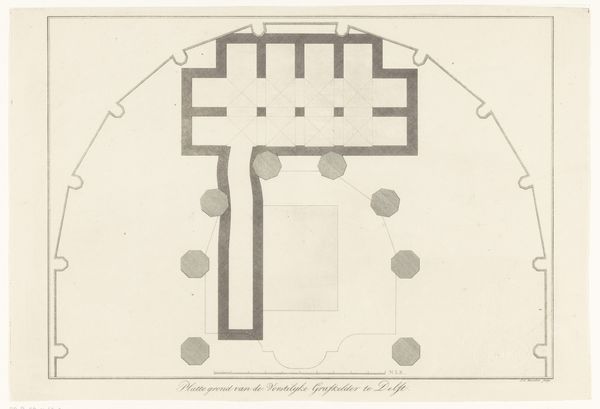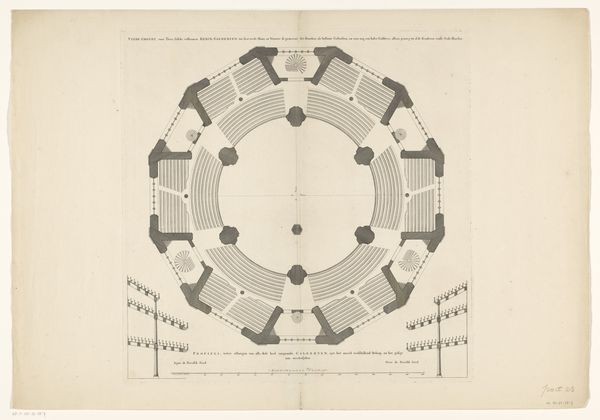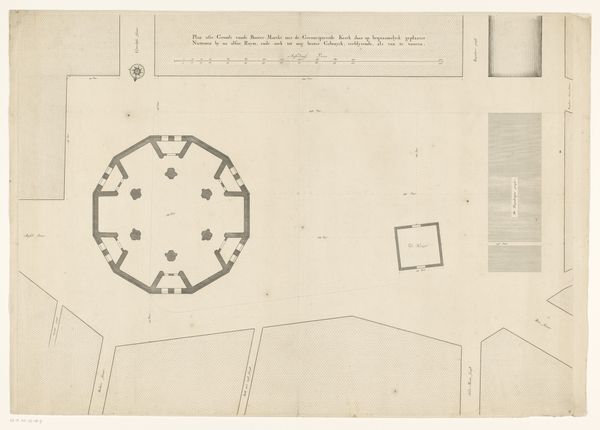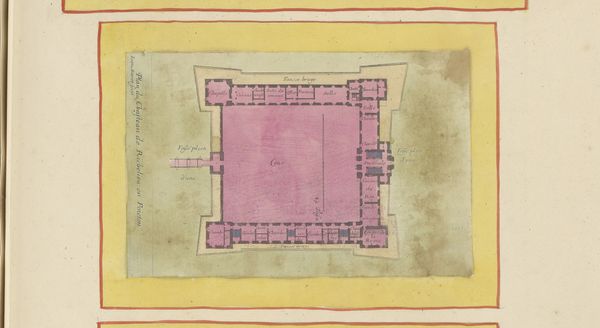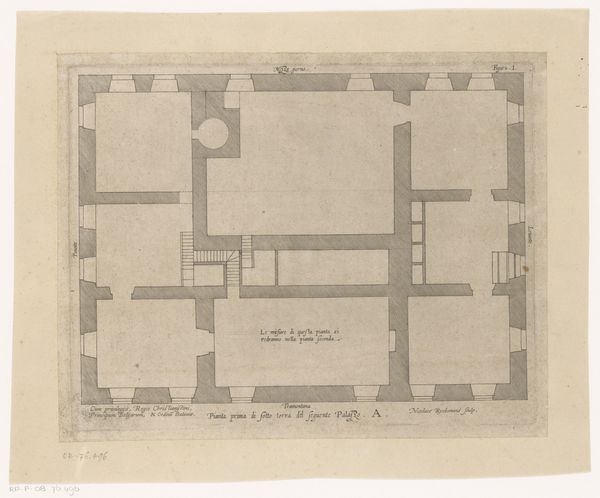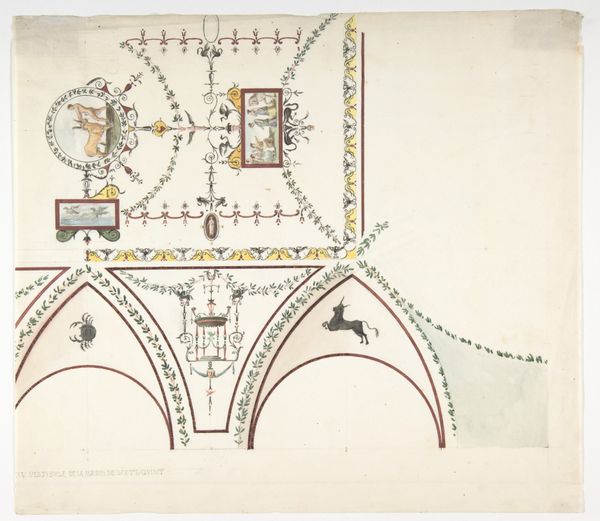
drawing, print, watercolor, architecture
#
drawing
#
water colours
# print
#
watercolor
#
geometric
#
geometric-abstraction
#
line
#
cityscape
#
watercolor
#
architecture
Dimensions: sheet: 10 11/16 x 14 7/8 in. (27.2 x 37.8 cm)
Copyright: Public Domain
Editor: This is "Plan of a Room," a watercolor drawing created sometime between 1800 and 1850 by an anonymous artist. It's currently housed at the Metropolitan Museum of Art. It's quite an intriguing layout, almost like a puzzle. I'm struck by how the furniture arrangements seem to dictate the social dynamics of the space. What can you tell me about this piece? Curator: This "Plan of a Room" is more than just an architectural drawing; it is a fascinating window into the social and cultural life of its time. Notice how different rooms are designed and labeled—'Dinner,' 'Library,' 'Conversation Table.' These divisions weren't just about function, but reflected a structured society with clearly defined roles and activities. Editor: That makes sense. So, the layout literally frames social interaction? Curator: Precisely! Think about the rise of museums during this period. They also served to curate behavior, dictating how people should view art and interact with knowledge. This room plan, with its implied etiquette and prescribed activities, parallels that kind of curated experience, but in a private setting. Editor: That’s a great parallel. The positioning of the conversation table does feel like it dictates how many people should be around it at any given time. Almost like a museum display for social etiquette! Curator: Exactly! The very act of creating such a plan indicates a desire to control and present a specific image of domestic life. The seemingly innocent watercolor actually embodies power dynamics and societal expectations of the era. Now, consider the anonymity of the artist. Editor: You're right, that's interesting. Almost as if the *idea* of the ideal room was more important than who designed it? Curator: Possibly. Perhaps this was a common template or something for prospective landowners, but whoever created the piece wasn’t the most important part. Ultimately, that idea makes it all the more interesting. Editor: I never considered a floorplan could hold so much social commentary. It has given me a new way to approach how public and private spaces interact in art. Curator: Indeed, considering art within its social and institutional framework often reveals unseen dimensions.
Comments
No comments
Be the first to comment and join the conversation on the ultimate creative platform.
